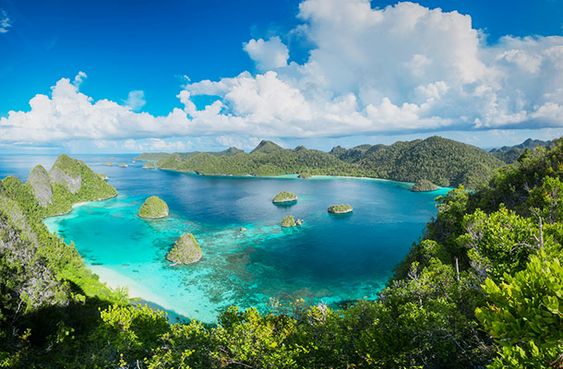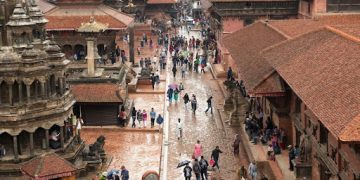5 Wild Experiences to Have in Papua New Guinea
New Guinea, a land of untamed beauty and rich cultural heritage, offers a plethora of wild experiences for the adventurous traveler. From trekking historic trails to diving in pristine waters, this island nation promises unforgettable adventures. Here are five wild experiences you must have in Papua New Guinea.
1. Trek the Kokoda Track
The Kokoda Track is not just a trail; it’s a journey through history and nature. This 96-kilometer trek winds through the rugged Owen Stanley Range, connecting Kokoda in the north to Ower’s Corner near Port Moresby in the south. Originally used for trade and cultural interactions, the track gained historical significance during World War II when it became a battleground between Japanese and Allied forces. Today, trekking the Kokoda Track is a rite of passage for many, offering a challenging yet rewarding experience that tests both physical and mental endurance.
As you traverse the track, you’ll encounter dense rainforests, steep climbs, and breathtaking vistas. The journey is as much about connecting with the past as it is about pushing your limits. Along the way, you’ll pass through remote villages where you can interact with local communities and learn about their way of life. The Kokoda Track is a testament to the resilience of both the human spirit and the natural world.
For those planning to embark on this adventure, it’s essential to prepare thoroughly. Ensure you have the necessary permits and consider hiring a local guide to enhance your experience. The trek can take anywhere from four to twelve days, depending on your pace and fitness level. Remember, the journey is as important as the destination, and every step on the Kokoda Track is a step back in time.
Also, read about 10 things to know Before traveling to Papua New Guinea here: https://offvisa.com/it/news/10-things-to-know-before-traveling-to-papua-new-guinea
2. Witness the Baining Firedance
The Baining Firedance is a mesmerizing cultural spectacle that offers a glimpse into the spiritual world of the Baining people. This ancient ritual, performed in the East New Britain province, involves dancers adorned in elaborate masks and costumes leaping through roaring flames. The dance is traditionally held to celebrate significant events such as births, harvests, and initiations.
Attending the Baining Firedance is a unique opportunity to witness a tradition that has been passed down through generations. The dance is performed at night, adding to the mystical atmosphere as the flames illuminate the darkness. The rhythmic drumming and chanting create a hypnotic ambiance, drawing you into the heart of the ritual. It’s a powerful reminder of the deep connection between the Baining people and their ancestral spirits.
If you’re planning to witness this incredible event, it’s best to visit during the late September festival when the dance is performed for travelers. This is a rare chance to experience a cultural tradition that remains largely untouched by modern influences. Be sure to respect the customs and traditions of the Baining people, and take the time to learn about the significance of the dance from local guides.
3. Dive into the Coral Triangle
Papua New Guinea is a diver’s paradise, boasting some of the world’s most spectacular underwater landscapes. Located within the Coral Triangle, the waters around Papua New Guinea are teeming with marine life and vibrant coral reefs. Popular diving spots include Kimbe Bay and Kavieng, where you can explore towering reef pinnacles and encounter a dazzling array of sea creatures.
Diving in Papua New Guinea offers a chance to see everything from tiny nudibranchs to majestic manta rays. The clear waters provide excellent visibility, allowing you to fully appreciate the underwater beauty. Whether you’re an experienced diver or a beginner, there are dive sites suitable for all skill levels. Many dive operators offer guided tours and packages that include accommodation, making it easy to plan your underwater adventure.
In addition to the stunning coral reefs, Papua New Guinea is home to numerous shipwrecks from World War II. These underwater relics provide a fascinating glimpse into the past and are now thriving artificial reefs. Exploring these wrecks is a thrilling experience, combining history with the excitement of diving. Don’t forget to bring an underwater camera to capture the incredible sights you’ll encounter beneath the waves.
Learn more about safety in Papua New Guinea here: https://offvisa.com/it/news/safety-in-papua-new-guinea-a-comprehensive-guide-for-travelers
4. Explore the Sepik River
The Sepik River, one of the longest rivers in Papua New Guinea, is a lifeline for the communities that live along its banks. A journey along the Sepik River offers a unique opportunity to explore remote villages and experience the rich cultural heritage of the region. The river is known for its intricate wood carvings, traditional ceremonies, and vibrant markets.
Traveling by canoe or motorized boat, you’ll navigate the winding waterways and visit villages where time seems to stand still. The Sepik River is home to the Sepik people, who are renowned for their artistic skills and elaborate rituals. You’ll have the chance to witness traditional dances, participate in local customs, and purchase handcrafted souvenirs directly from the artisans.
One of the highlights of a Sepik River expedition is visiting the Spirit Houses, or Haus Tambaran, which are central to the spiritual life of the Sepik people. These elaborately decorated structures serve as meeting places for the community and are adorned with carvings that depict ancestral spirits. Exploring the Sepik River is a journey into the heart of Papua New Guinea’s cultural diversity and natural beauty.
Learn more about transport in Papua New Guinea here: https://offvisa.com/it/news/getting-around-papua-new-guinea-transportation-tips
5. Climb Mount Wilhelm
For those seeking a physical challenge, climbing Mount Wilhelm, the highest peak in Papua New Guinea is an adventure not to be missed. Standing at 4,509 meters, Mount Wilhelm offers breathtaking views and a diverse range of ecosystems. The climb takes you through lush rainforests, alpine meadows, and rocky summits, providing a unique opportunity to experience the country’s natural beauty.
The trek to the summit typically takes two to three days, with climbers spending a night at the base camp before making the final ascent. The trail is well-marked, but the climb can be strenuous, especially as you approach the higher altitudes. It’s important to be well-prepared and acclimatized to ensure a safe and enjoyable climb. Hiring a local guide is highly recommended, as they can provide valuable insights and assistance along the way.
Reaching the summit of Mount Wilhelm is a rewarding experience, offering panoramic views of the surrounding landscape. On a clear day, you can see both the north and south coasts of Papua New Guinea. The sense of accomplishment and the stunning vistas make the climb well worth the effort. Whether you’re an experienced mountaineer or a novice hiker, Mount Wilhelm promises an unforgettable adventure.
Exploring Papua New Guinea with an e-Visa
Traveling to Papua New Guinea has become more accessible with the introduction of the e-Visa system. The Papua New Guinea e-Visa process is straightforward and allows travelers to apply for their visa online through the Offvisa service, eliminating the need to visit an embassy or consulate. This system is designed to make it easier for tourists to explore the country’s diverse landscapes and rich cultural heritage.
To apply for an e-Visa, you’ll need to fill out the application form. The process requires basic personal information, passport details, and travel plans. Once submitted, the application is typically processed within a few days. It’s advisable to apply well in advance of your planned travel dates to ensure a smooth entry into the country.
The e-Visa is valid for a specified period, usually up to 30 or 60 days, allowing ample time to explore the many attractions Papua New Guinea has to offer. Whether you’re trekking the Kokoda Track, diving in the Coral Triangle, or experiencing the Baining Firedance, having an e-Visa simplifies your travel arrangements. Be sure to keep a copy of your e-Visa approval with you during your travels, as you’ll need to present it upon arrival.
Conclusion
Papua New Guinea is a destination that offers a wealth of wild experiences for those willing to venture off the beaten path. From trekking historic trails and witnessing ancient rituals to diving in pristine waters and exploring remote rivers, this island nation is a treasure trove of adventure. As you plan your trip, be sure to visit these useful links to ensure a smooth journey: Papua New Guinea Tourism Promotion Authority, Papua New Guinea Immigration and Citizenship Service Authority, and Kokoda Track Authority.






